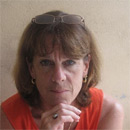Part VI of VII-part series: WHAT THE WORLD CAN LEARN FROM WEST AFRICA’S UNHEARD
Hansen Apewe Abaloori, Akaa, Kassena–Nankana West District, Upper East Region, Ghana
People in the community of Akaa, in Kassena-Nankana District in Ghana’s Upper East Region, remember the days before officials just across the border in neighbouring Burkina Faso, surveyed the land to mark the southern edge of the Nazinga Wildlife Reserve in their country. It was after the survey that people in Akaa learned that much of their ancestral land would no longer be available to them because it lay on the Burkinabe side of the frontier, a line drawn more than a century earlier on the colonial map. Communities on the Ghanaian side such as Akaa suddenly found the international border being enforced and their access to family lands cut off. They were never given an explanation for the survey.
The loss of those lands has never ceased to cause problems for the people of Akaa. As Hansen Abaloori tells us, not only are they unable to access tree resources on the family lands, they no longer have enough land to fallow. And so, their soils have grown infertile; their harvests poor.
WATCH Part I: Trees “for the grandchildren” in a community forest
WATCH Part II: Losing farmland and forest to a national park
WATCH Part III: Keeping the peace in a national park buffer zone
WATCH Part IV: Trees and wildfire worries
WATCH Part V: Firewood for income in a degrading landscape
We want you to share Forests News content, which is licensed under Creative Commons Attribution-NonCommercial-ShareAlike 4.0 International (CC BY-NC-SA 4.0). This means you are free to redistribute our material for non-commercial purposes. All we ask is that you give Forests News appropriate credit and link to the original Forests News content, indicate if changes were made, and distribute your contributions under the same Creative Commons license. You must notify Forests News if you repost, reprint or reuse our materials by contacting forestsnews@cifor-icraf.org.












